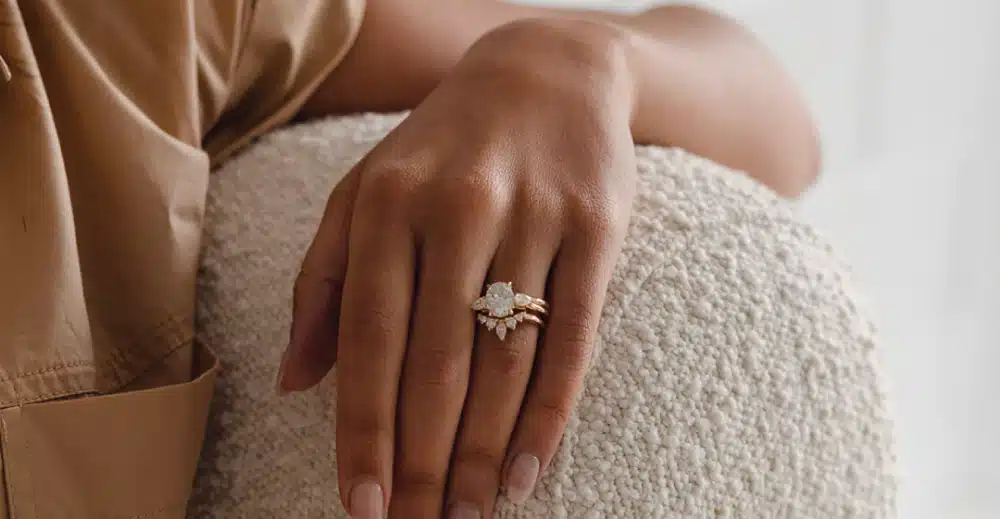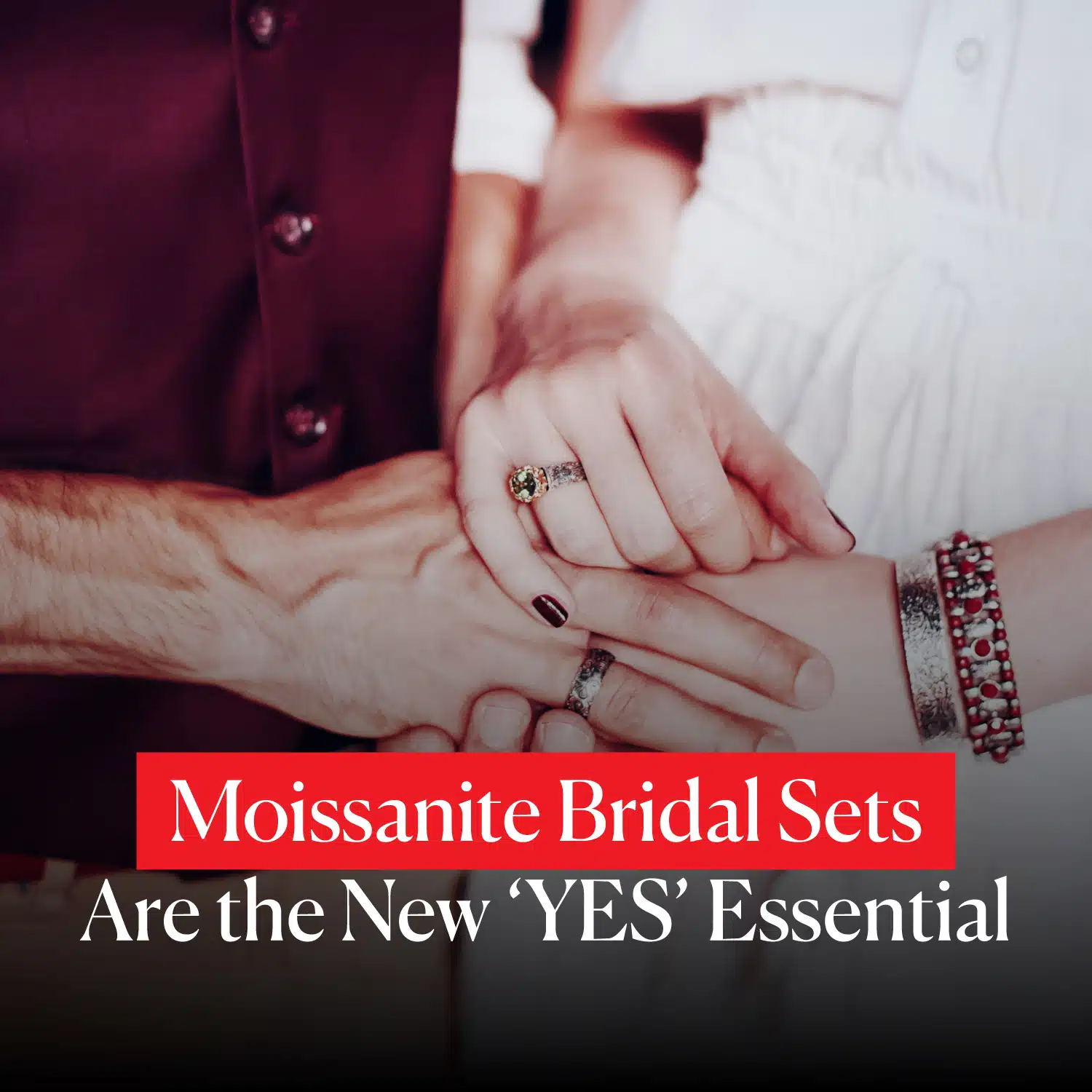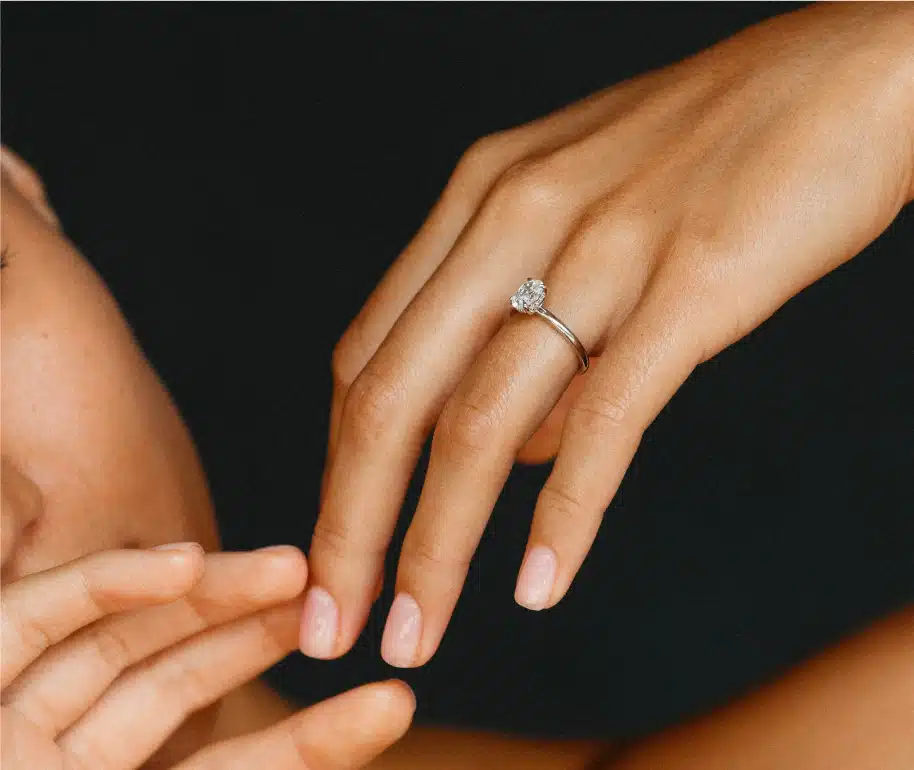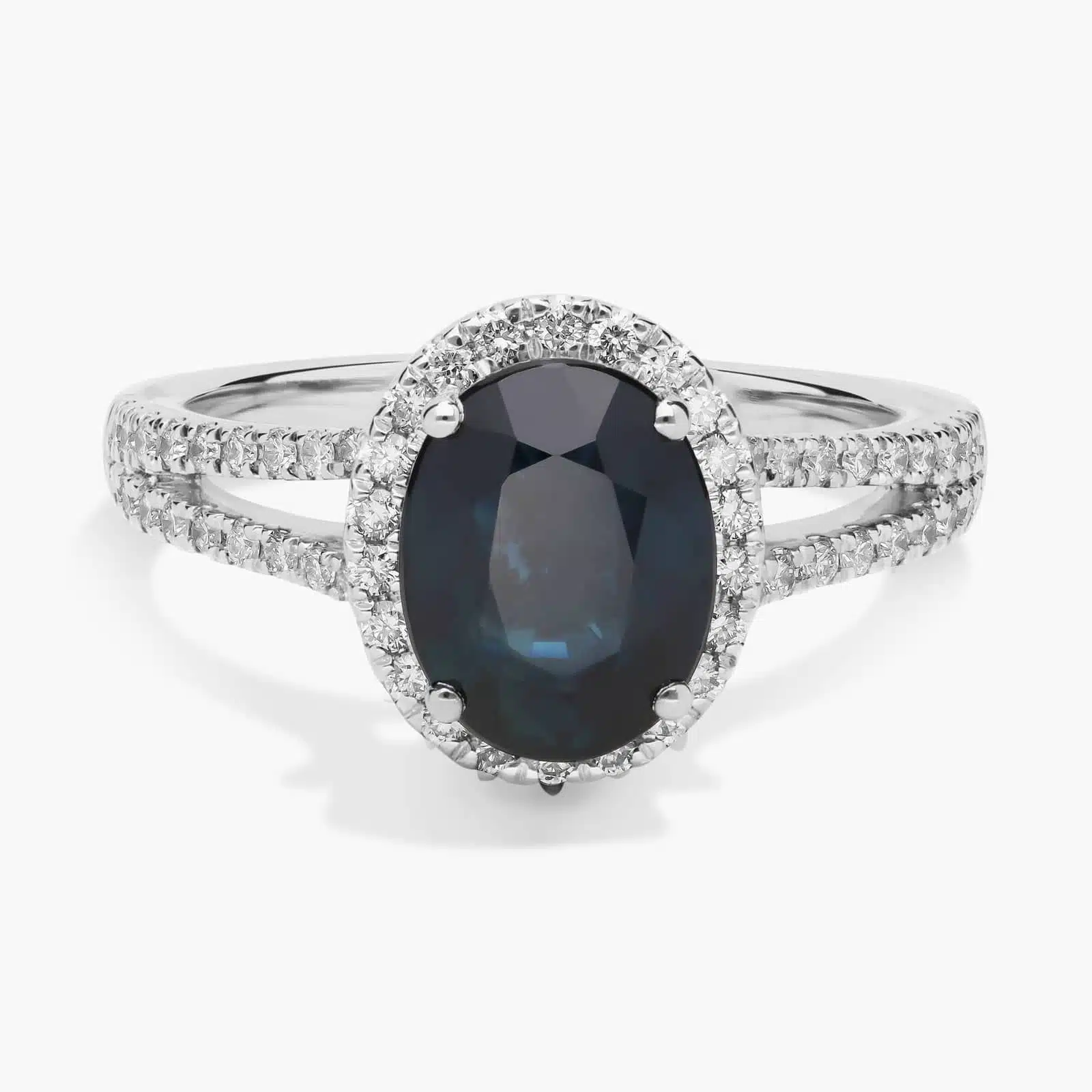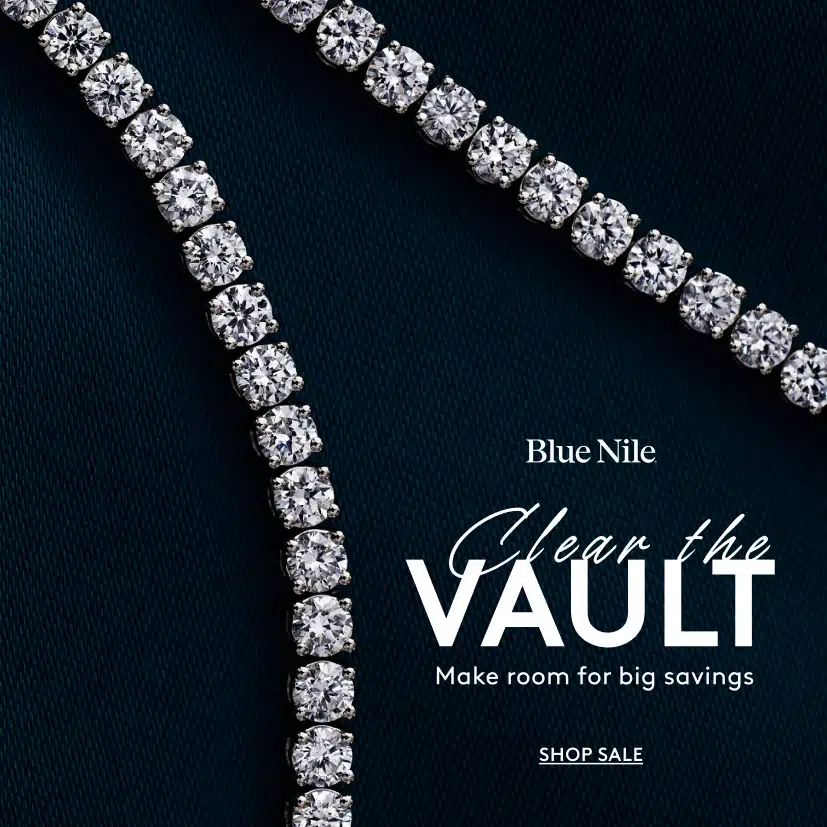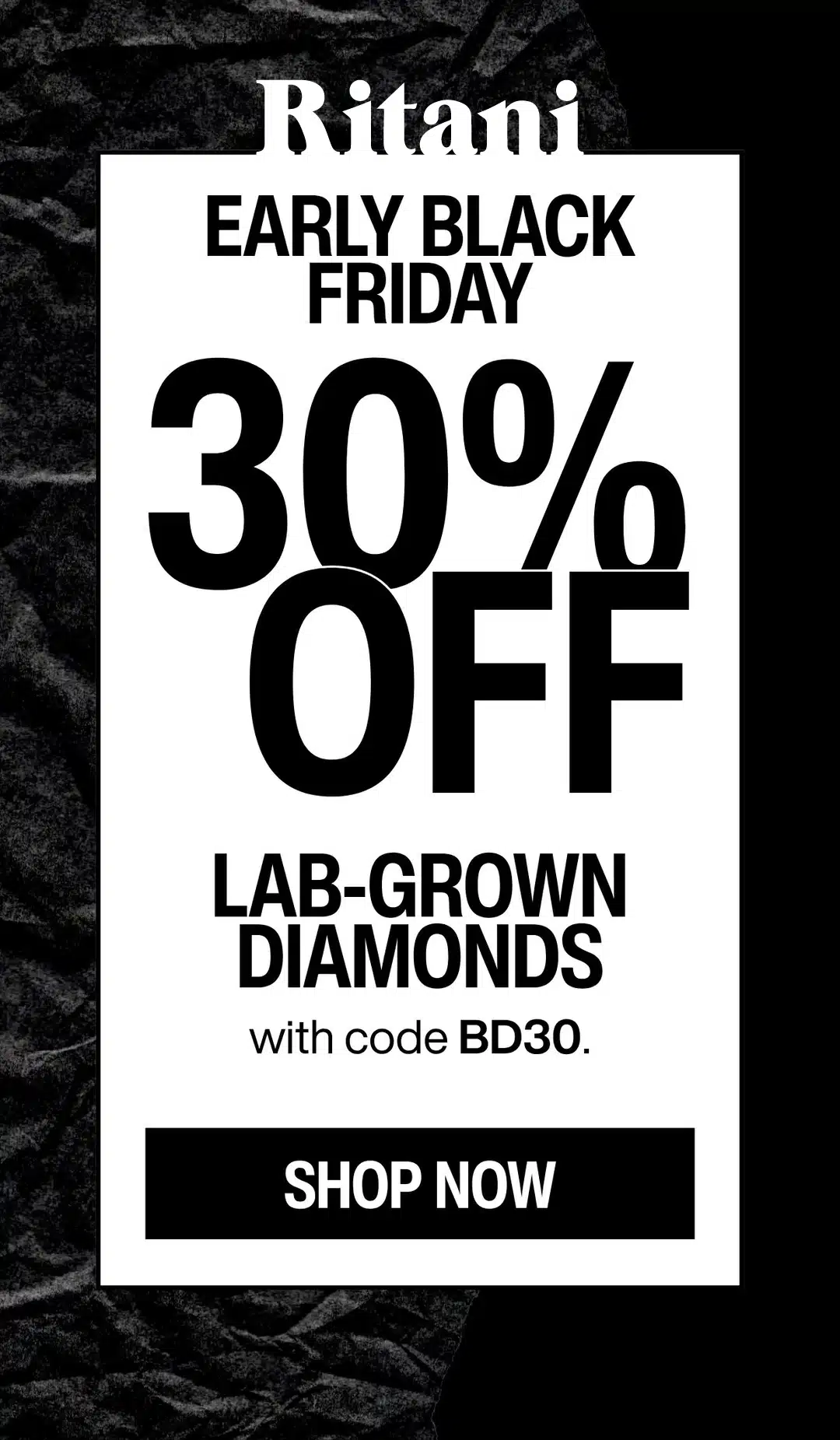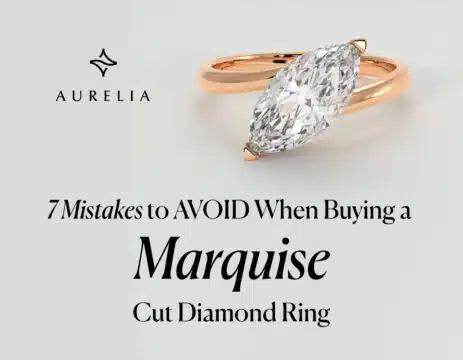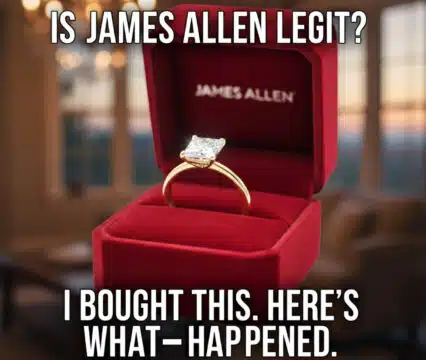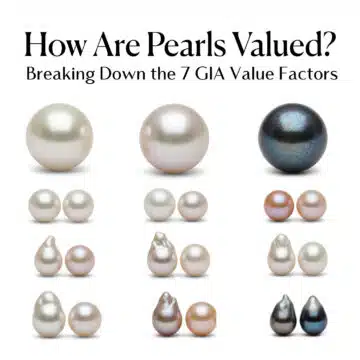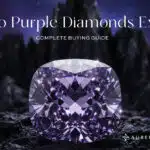Let me be brutally honest: asking “what does a blue diamond look like?” is the wrong question. It’s like asking what the sky looks like—the real answer isn’t one thing. A real blue diamond can look like anything from a pale, stormy gray on a winter morning to the deepest, most electric blue you can imagine at the bottom of the ocean.
It’s a fantastic question because most people have never actually seen one outside of a museum. We see a picture of the mythical Hope Diamond and think we know, but the reality of what a blue diamond is is so much more surprising. For every one of those billion-dollar gems, there’s a world of different shades, stories, and—here’s the most exciting part for us in 2025—a completely new reality that puts this legendary color within reach.
I’m Mehedi, and as your “friend in the business,” I’m not just going to show you pictures today. I’m going to pull back the curtain on everything. We’re going to dive into the mind-blowing science that involves ancient, recycled oceans to give these diamonds that are blue their color.
We’ll look at the insane, real-world auction prices from this year. And I’ll give you the complete breakdown on the lab-grown revolution that is changing the game for good.
So, forget what you think a blue diamond gem looks like. You’re about to find out what they really are. Let’s get into it.
Diamond IQ Test: Natural or Lab-Grown?
Two identical diamonds: GIA Certified, 1.51ct, D Color, VVS1, Ideal Cut. One is natural ($16,530), the other is lab-grown ($2,390). Choose the diamond you like better and see if you can match it to its origin.
The Visual Guide: What Does a Blue Diamond Actually Look Like?
Alright, let’s get into the most important part of our journey. If you’re going to invest your time and money in a blue diamond, you need to know what you’re really looking at. Forget the single crayon color labeled “blue.” In my world, a blue diamond isn’t one color; it’s a whole universe of them.
Let’s train your eye to see the subtle differences that can mean a difference of millions of dollars.

The Blue Diamond Color Chart: From a Whisper to a Roar
Think of the GIA’s grading scale less as a boring chart and more as a map to rarity and beauty. Every step up this ladder is a leap into a deeper, more valuable world of color.
Faint, Very Light, & Light Blue
This is what I call “the ghost of blue.” You’ll look at the stone, and you’ll feel a coolness, a subtle presence that’s not quite white. It’s like the barest hint of a winter sky on a bright day. This is the ultimate “if you know, you know” color.
For those on a budget who want something truly unique, finding a beautiful Light blue diamond is a fantastic strategy, far removed from the warmer tones you might find in an I Color Diamond.
Fancy Light Blue
Now we’re talking. The whisper has become a clear voice. A Fancy Light blue diamond looks like a perfect, bright baby blue. It’s pastel, yes, but the color is undeniable and joyful. This is often the starting point for a classic light blue diamond engagement ring, where the color is the clear and intended star of the show.
Fancy & Fancy Intense Blue
We’ve left the sky and dove into the sea. A Fancy Blue is a confident, solid color, but a Fancy Intense blue diamond is where the real magic begins. It’s a rich, velvety royal blue with a mesmerizing depth. This is the kind of color that pulls you in. It’s no longer just a pretty stone; it has a powerful, captivating presence.
Fancy Vivid Blue
This is it. The end of the line. The stuff of legends. A Fancy Vivid blue diamond is so saturated with color it seems to generate its own light. It’s the deep, electric, bottomless ocean. This is the color of the Hope Diamond, the Oppenheimer Blue. It is, next to a pure red, the rarest color diamond in the world, the absolute pinnacle of what nature can create.
Deal Alert:
Elevate your design. Get up to 30% OFF engagement ring settings at
One In A Lifetime Sale:
“Clear The Vault” – Get up to 70% OFF on select jewelry at
| Pro Tip:
See every detail with 360° HD videos available at
The Secondary Hues: Understanding the Diamond’s Personality
Now for an insider’s secret that separates a novice from an expert: a pure blue color diamond is almost a myth. The vast majority of these stones have a secondary color modifier, which is not a flaw, but the unique fingerprint of that specific diamond’s journey.
My Expert Take: “Don’t get hung up on finding a ‘pure’ blue. Instead, fall in love with the unique personality of a secondary hue. The most beautiful gems are often the ones with a complex story to tell.”
Gray-Blue
This is the most common modifier, and honestly, it can be stunning. These stones have a sophisticated, moody, and steely look, like a stormy sky. They feel powerful and elegant, the intellectual cousin to the brighter blues.
Green-Blue
This is a rare and highly prized combination. A green blue diamond can have a breathtaking turquoise or teal appearance, like tropical waters. Its look is exotic and completely unique. The interplay of colors creates a depth that is truly special, a phenomenon we also see in the incredible world of the Purple Diamond.
The Role of Blue Fluorescence: A Hidden Glow
Here’s a final, expert-level detail that absolutely matters: fluorescence. This is the diamond’s secret identity—a glow it emits under UV light (like a black light or strong, direct sunlight).
In a diamond with blue fluorescence, this property can be a double-edged sword. For some Fancy Blue stones, a very strong fluorescence can create a slightly milky or “overcast” appearance in direct sunlight, which can dampen its beauty.
However—and this is a great tip—in some Faint or Light blue diamonds, a bit of blue fluorescence can actually help the stone, making its blue color appear slightly stronger than its grade would suggest.
The effect is different in every single diamond, which is why there is no substitute for a high-quality video or seeing the stone in person. To learn everything there is to know about this complex topic, you have to read my in-depth guide: Diamond Fluorescence: Flaw or Feature?.
The Science of Blue Diamonds: A Story of Ancient Oceans
This isn’t just science; it’s one of the most romantic and incredible stories our planet has ever told. The journey of how a real blue diamond gets its color starts billions of years ago and involves a process so epic it’s almost hard to believe. But as your expert guide, I’m going to pull back the curtain on this geological miracle.

What Makes a Diamond Blue? The Boron Connection
Alright, so what’s the secret recipe? Why are diamonds blue sometimes?
Unlike its famous cousins—like the brilliant gems we explored in our Iconic Yellow Diamond Engagement Rings guide that get their color from nitrogen, or the mythical Purple Diamonds that are twisted by pressure—a blue diamond’s color comes from a single, magical ingredient: boron.
Let me break this down simply. As the diamond’s crystal structure was forming, a tiny amount of boron—we’re talking just a few atoms per million—got trapped in the carbon lattice. This tiny change has a huge effect. The new structure now acts like a perfect light filter. As white light passes through the diamond, the boron-infused grid absorbs yellow light.
Think about basic color theory: when you take yellow out of the equation, what’s left for our eyes to see is its beautiful opposite—blue. The more boron that got trapped, the more yellow light gets absorbed, and the deeper and more intense that stunning diamond blue color becomes.
Simple chemistry, right? But where that boron comes from is where the story gets truly incredible.
A Deep-Earth Origin Story: Made from Recycled Seawater
This is the part that blows my mind. This is the A++++, “no-gap” knowledge that elevates a blue diamond from a gemstone to a piece of planetary history.
Your average diamond forms about 150-200 kilometers down, in the earth’s upper mantle. But based on groundbreaking 2025 research, we now know that a natural blue diamond is born in the extreme depths of the lower mantle, an almost unimaginable 410 to 660 kilometers below our feet.
For context, that’s like traveling from Los Angeles to Phoenix, but straight down. It is a world away from where other diamonds are born, a topic we explore in our guide on At What Depth is Diamond Found?.
So, how did the element boron get all the way down there? The answer is the planet’s own recycling system.
Here’s the mind-blowing part: hundreds of millions of years ago, through the process of plate tectonics, ancient ocean floors—rocks saturated with seawater and rich in minerals like boron—were dragged deep into the Earth’s mantle in a process called subduction.
The boron that gives a blue diamond its color is the very same boron that was once dissolved in ancient seawater.
Mehedi’s Bottom Line: “Let this sink in. When you hold a real, natural blue diamond, you are literally holding a crystallized piece of a lost ocean, brought back to the surface after a billion-year journey. It is history you can wear.”
The mind-boggling pressure at these depths is also what forges a diamond’s legendary strength, creating a material so hard and so durable that it feels almost indestructible. To understand just how tough they really are, you have to read my guide on What Things Are Strong Enough to Break Diamonds?.
Read Our 5-Star Blue Nile Review
Check our comprehensive Blue Nile review to learn why we rated Blue Nile 5 stars for their exceptional quality and value.
The Rarity Factor: Just How Rare is a Blue Diamond?
Let’s talk about the word “rare.” In the jewelry world, it gets thrown around a lot. But when we talk about a blue diamond, we’re on a completely different level of existence. We’re moving beyond rarity and into the realm of geological miracles. To understand what that means, we first need to put the entire concept of diamond rarity into perspective.
Putting Diamond Rarity in Perspective
I get this question all the time from smart, skeptical clients: “Are diamonds rare at all, or is it just marketing?” It’s a fantastic and necessary question.
The truth is nuanced. Industrial-grade diamonds? No, they are not particularly rare. But gem-quality diamonds—the ones beautiful enough to be put in jewelry—are much scarcer. And beautiful, well-cut diamonds with high clarity grades and no visible flaws? They are rarer still. Think of the vast difference between an almost opaque stone like those in my I2 Diamonds Guide and a flawless masterpiece. The good stuff is genuinely hard to find.
Mehedi’s Bottom Line: “It’s like the difference between all the grains of sand on a beach and a single, perfectly formed, unbroken seashell. The material is common, but the treasure is rare.”
The Rarest of the Rare: Blue Diamonds by the Numbers
Now, once you understand that baseline of gem-quality rarity, we can talk about blue diamonds. And this is where things get truly insane. Out of all the gem-quality diamonds mined in a year, what percentage do you think have a blue color?
The answer is a mere 0.1%. That’s one in a thousand of the already rare gems.
This is a level of scarcity that is almost impossible to comprehend. It firmly places the blue diamond as the absolute rarest color diamond in the world, with only the mythical pure red diamond being more scarce. Even the spectacular gems we explore in my guide to the legendary Pink Diamond are more common than a top-quality blue. To own one is to own one of the planet’s most unlikely treasures.
The World’s Blue Diamond Hotspot: The Cullinan Mine
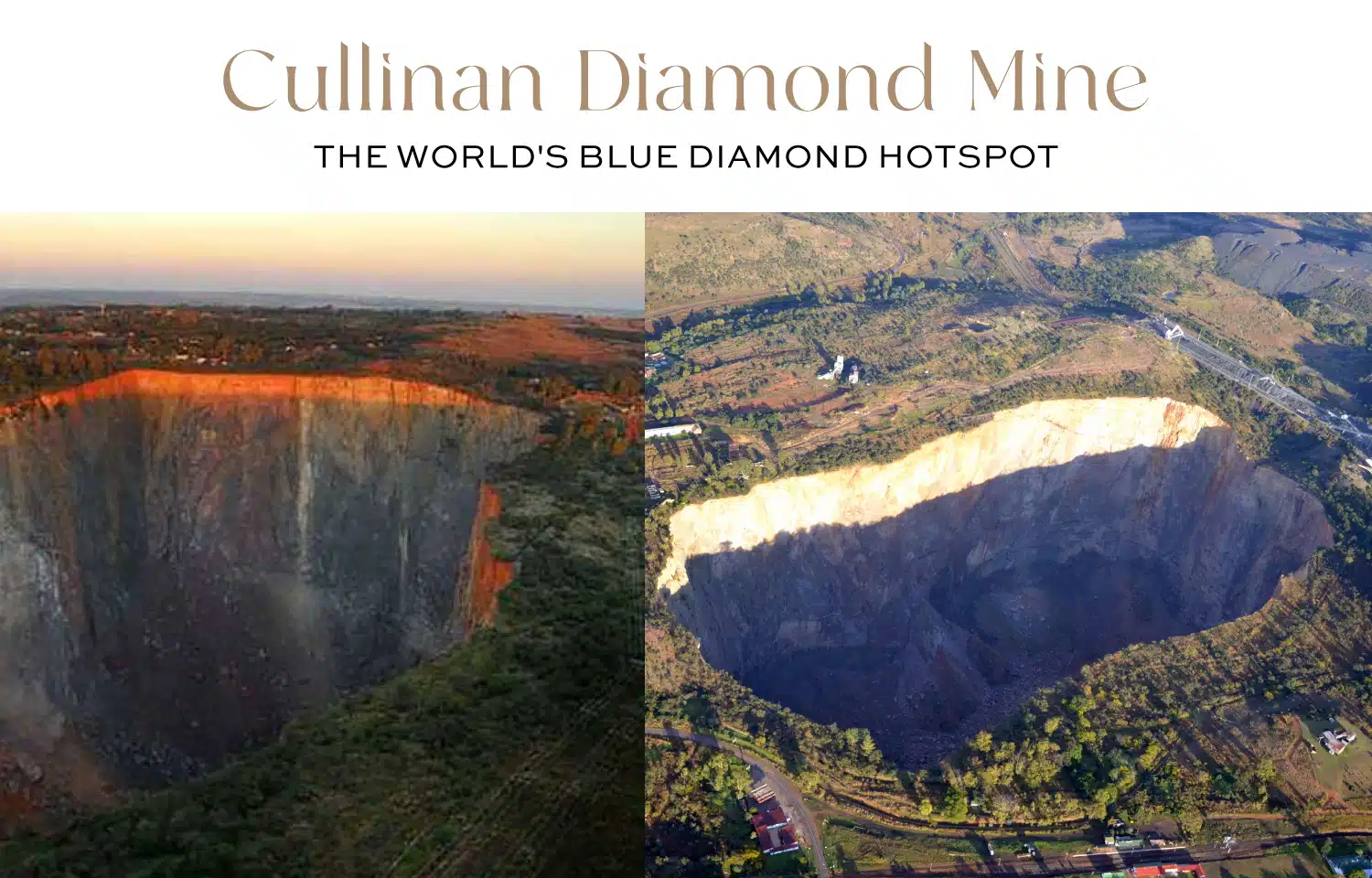
But the story of this incredible scarcity doesn’t end there. It gets even more concentrated. It isn’t just that blue diamond mining is difficult; it’s that you can only do it in one place.
Over 90% of the world’s significant, high-quality blue diamonds, including a now-legendary $25 million rough diamond unearthed in recent years, have all come from a single, miraculous source: the Cullinan Mine in South Africa.
This makes the Cullinan Mine a geological freak of nature. It’s the only place on earth where the specific, deep-mantle conditions that create blue diamonds regularly occurred. This creates a massive supply bottleneck.
The fate of the entire natural blue diamond market rests on the output of this one, single mine. It’s a situation we saw play out with the Argyle Mine and its world-dominating supply of pinks, but for blues, the single-source scarcity is even more extreme.
The Two Realities of Blue Diamond Price & Value in 2025
When you ask, “how much does a blue diamond cost?” the honest answer is: which reality are you living in? In 2025, the blue diamond exists in two completely separate financial universes. The first is the world of the natural, investment-grade asset—a world of auction houses and staggering wealth.
The second is the new, accessible reality of the lab-grown marvel, a world of technology and breathtaking value. As your guide, I need to walk you through both.
Reality #1: The Natural Blue Diamond Market – The Investment-Grade Asset
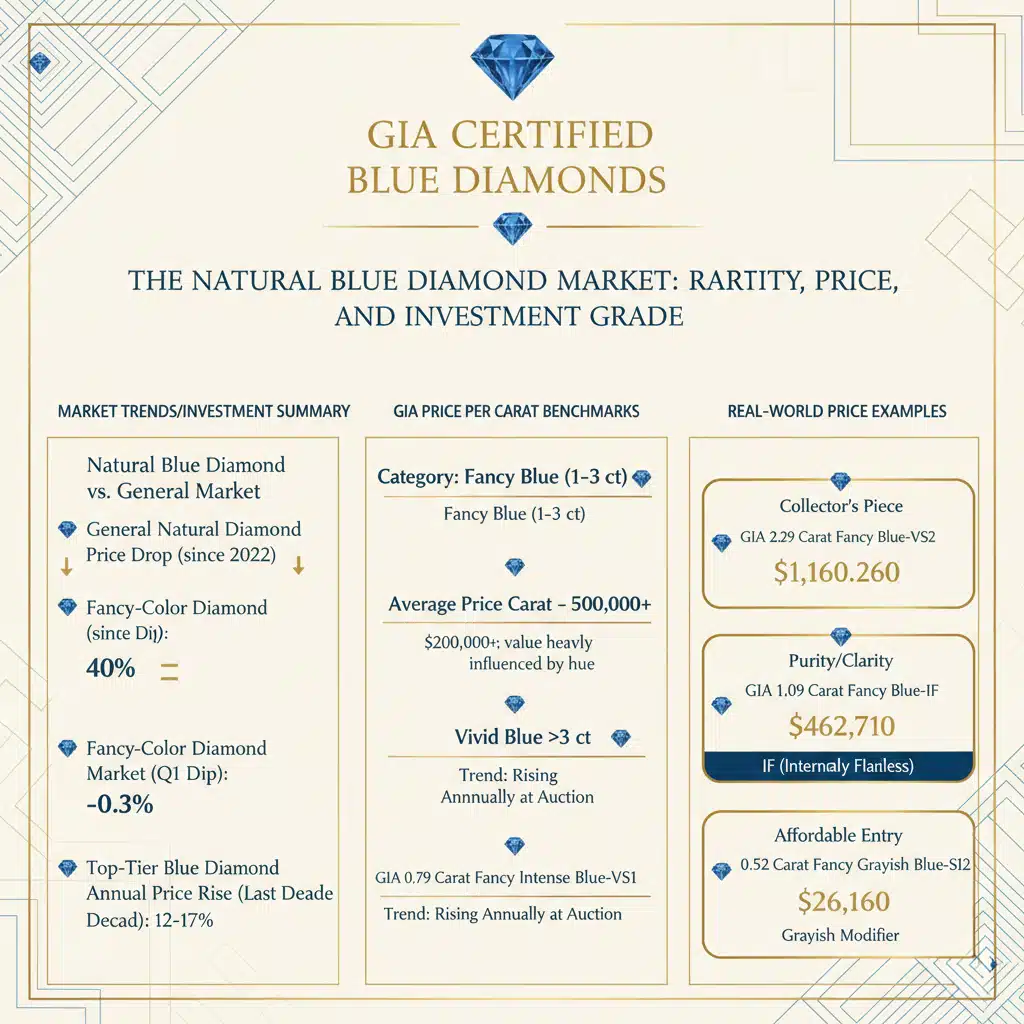
This is the world of the ultra-rare, the collectible, the geological masterpiece. The market for natural blue diamond rings is less like a jewelry store and more like the fine art market. These are hard assets with a proven track record of value.
Based on the very latest 2025 market data, while the broader fancy-color diamond market saw a tiny, modest dip of about -0.3% in Q1, top-tier blue diamonds have remained incredibly resilient.
Their extreme rarity has insulated them from the pressures that have caused overall natural diamond prices to drop 40% since 2022. For the best of the best, prices have continued to rise 12-17% annually over the past decade.
Here is what you can expect in today’s market:
| Category (Natural, 2025) | Average Price Per Carat | Market Trend |
| Fancy Blue (1-3 ct) | $200,000+ – $500,000+ | Stable; value heavily influenced by hue |
| Vivid Blue (>3 ct) | $1 Million+ | Rising Annually at Auction |
These numbers can feel abstract, so let’s look at real GIA certified blue diamonds available today.
- The Seven-Figure Masterpiece: At the absolute top end, look at the GIA 2.29 Carat Fancy Blue-VS2 Cushion Cut Diamond from James Allen. The price? A staggering $1,160,260. This is a true collector’s piece.
- The Flawless Wonder: For a similar price, you can find a stone prized for its ultimate purity, like the GIA 1.09 Carat Fancy Blue-IF (Internally Flawless) Pear Shaped Diamond at James Allen for $462,710. The IF clarity grade makes this an incredibly rare gem, a concept we explore in our guide to VVS1 Diamond Clarity, which is one step down from Flawless.
- The Intense Beauty: Moving to a stone with a higher color grade, look at the GIA 0.79 Carat Fancy Intense Blue-VS1 Pear Shaped Diamond from Blue Nile. Even at a smaller size, the “Intense” color grade pushes its price to $283,130.
- The “Affordable” Entry Point: To see the huge impact of secondary colors, consider the GIA 0.52 Carat Fancy Grayish Blue-SI2 Pear Shaped Diamond at Blue Nile for $26,160. That “Grayish” modifier, while creating a beautiful stormy look, makes it vastly more accessible.
And for the ultimate proof of this market’s power, look no further than the recent auction headlines. On November 11, 2025, the legendary “Mellon Blue,” a 9.51-carat fancy vivid blue, sold for a massive $25.6 million at Christie’s.
‘This is the world where a single gemstone has the value of a real estate portfolio. This value is only verifiable with a rock-solid certificate, a lesson at the heart of my guide on What Does GIA Certified Mean?.
Reality #2: The Lab-Grown Blue Diamond Revolution – The Accessible Dream
Now, prepare for a number that will blow your mind. This is the reality for 99.9% of us. Thanks to incredible advancements in technology, you can own a blue diamond gem that is chemically, physically, and visually identical to its natural counterpart for a tiny fraction of the cost.
However, be aware that the lab-grown market is experiencing its own shake-up. An oversupply, largely from China (70% of production), has caused prices to plummet. A 1-carat lab blue that cost thousands in 2020 now costs just hundreds.
| Category (Lab-Grown, 2025) | Average Price Per Carat | Market Trend |
| Lab Blue (1-2 ct) | $500-$800 | Prices down a staggering 75% since 2020 |
This is where the story gets truly exciting for you, the buyer.
- Look at this stunning IGI 3.12 Carat Fancy Vivid Blue-VVS2 Oval Cut Lab-Grown Diamond from James Allen. The price is just $1,470.
- Or this gorgeous IGI 3.13 Carat Fancy Vivid Blue-VS1 Oval Cut Lab-Grown Diamond from Blue Nile for $1,480.
This is not a typo. For less than the cost of the latest iPhone, you can own a magnificent, over 3-carat blue diamond engagement ring with a top-tier “Fancy Vivid” color grade. That $1.16 million natural diamond we looked at? You can get a larger, higher color grade, and higher clarity lab-grown version for 0.1% of the price. It is the single greatest value proposition in the history of fine jewelry.
My Expert Advice: “You must go into this with your eyes open. As data shows, lab-grown diamonds have little to no resale value. You are buying this for its stunning beauty and its incredible price, not as a financial asset. If you are comfortable with that, it is the smartest purchase you can make.”
The science behind this revolution is incredible. We explore it fully in my guide to the different Types of Lab-Grown Diamonds. The majority of these stones are certified by IGI, and you can learn about their grading in my deep-dive on IGI Diamond Certification.
James Allen: Our 5-Star Choice for Price and Selection
Check our comprehensive James Allen Review to learn more about their pricing and commitment.
The Battle of the Blues: Blue Diamond vs. Other Blue Gemstones
You love the color blue, and you want a spectacular gemstone for a ring. That’s a fantastic starting point, but now comes the big question: which one? The blue diamond is the undisputed king of rarity and sparkle, but it has some serious contenders in the world of colored gemstones.
As your guide, I need to walk you through the ultimate showdown: the blue diamond vs. blue sapphire, and then introduce you to a few other beautiful alternatives. This is where you make the smartest choice for your style and your budget.
Blue Diamond vs. Blue Sapphire: The Ultimate Showdown
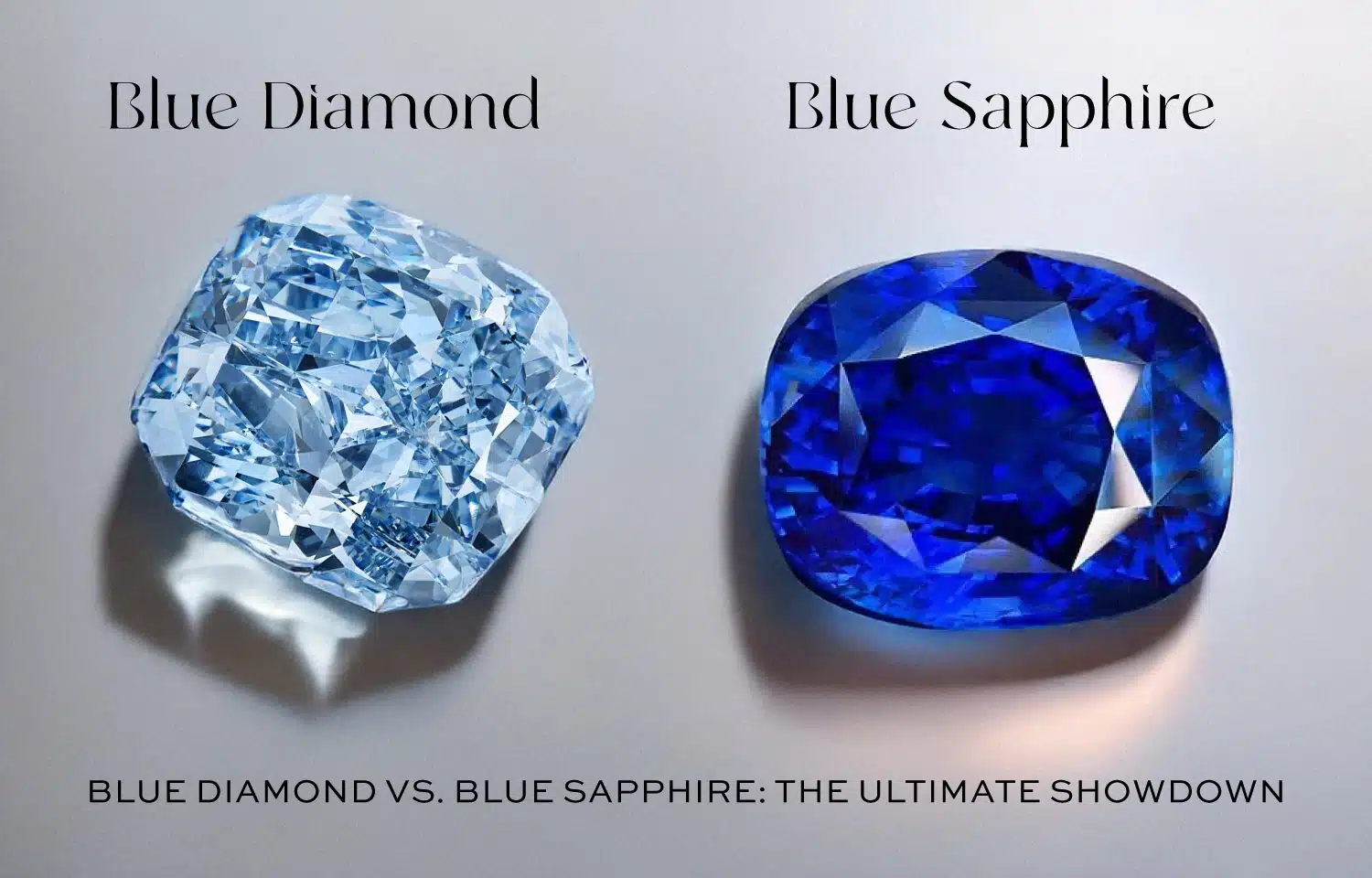
This is the main event. In one corner, you have the hardest, most brilliant gem on earth. In the other, you have the king of colored gemstones, a symbol of royalty for millennia. Let’s break them down.
This is the most critical difference. They are both blue, but they look and feel completely different.
- A Blue Diamond is Fire: It has an electrifying, fiery, and brilliant sparkle. Because it’s a diamond, its main job is to play with light, breaking it into flashes of brilliance and fire. The blue is a breathtakingly rare color, but it’s a color that dances. It’s crisp, it’s icy, and it’s full of life.
- A Blue Sapphire is Water: A high-quality Blue Sapphire has a deep, rich, and velvety color saturation with a softer, more silky luster. You don’t look at a great sapphire; you feel like you’re diving into it. It’s a pool of pure, royal blue color. It glows rather than sparkles.
- Diamond: A perfect 10 on the Mohs scale of hardness. It is the hardest natural substance on Earth.
- Sapphire: An exceptionally durable 9 on the Mohs scale. This makes the sapphire gemstone one of the hardest and toughest gems in the world, perfectly suitable for a ring you wear every single day.
Mehedi’s Verdict: “Honestly, don’t let the 9 vs. 10 number be your deciding factor. It’s the difference between ‘invincible’ and ‘extremely tough.’ Both are more than durable enough for a lifetime of wear.”
This is the reality check. It’s the single biggest factor in the blue diamond vs. blue sapphire debate.
- A beautiful, high-quality 3-carat natural blue sapphire might cost you $15,000.
- A natural 3 carat blue diamond of the same quality would cost you several million dollars.
It’s not just a difference; it’s an entirely different category of wealth. Understanding this financial gulf is the first step in deciding which of these magnificent gems is right for you, and we explore the complexities of this in our guide to Sapphire Value Per Carat Calculation.
| Feature | Blue Diamond | Blue Sapphire |
| Look & Feel | Brilliant, Icy, Fiery Sparkle | Deep, Velvety, Silky Luster |
| Durability | 10/10 (The Hardest) | 9/10 (Extremely Durable) |
| Rarity | The Rarest Blue Gem | Rare (but accessible) |
| Price | Astronomical (Millions) | Attainable Luxury |
Other Beautiful Blue Gemstone Options
If your heart is set on a beautiful blue color but your budget doesn’t stretch into the sapphire or (especially) diamond range, nature has provided some absolutely stunning alternatives. These are some of the most expensive blue gemstones that still offer incredible value.
Aquamarine
This gem is like a piece of the Caribbean sea. It has a soft, watery, light blue-to-greenish-blue color that is bright and beautiful. As the birthstone for March, it’s a deeply meaningful choice for a spring baby. You can learn more about its beautiful hue in my guide to the Birthstone Color for the Month of March.
Blue Topaz
Often more affordable than aquamarine, blue topaz offers a vibrant and powerful blue color. You’ll typically see it in two varieties: a bright “Swiss Blue” and a deeper, moodier “London Blue.” It’s a fantastic way to get a big, beautiful blue look for an incredible value. You can learn more about its beautiful hue in my guide to the Birthstone Color for the Month of November.
Tanzanite
This is one of my favorite rare blue gems. Found only in one small mining area in Tanzania, it’s a truly exotic stone. Its most magical quality is its pleochroism—it can show different colors (blue, violet, and even burgundy) when viewed from different angles.
It has a stunning violet-blue hue that is unlike any other gem, making it a perfect choice for December babies, as we explore in What is December’s Birthstone?.
The A-List Accessory: Celebrities and Blue Diamonds in 2025
While the geological story of the blue diamond is incredible, its modern story is being written on the world’s most exclusive red carpets. In 2025, we are seeing a quiet but unmistakable resurgence of the blue diamond gem among A-list stars.
It has become the sophisticated power play for celebrities who want to stand out. While a classic white diamond is beautiful, a blue diamond stone is a statement. It says you value rarity, you appreciate connoisseurship, and you are not afraid of color.

Red Carpet Royalty
This year, the world of high jewelry has been lit up by a constellation of stars choosing blue for their most important moments, solidifying it as the go-to gem for ultimate glamour.
The biggest moments have revolved around Tiffany & Co.’s legendary “Blue Book” collection, a showcase of the world’s most incredible gems. At the 2025 launch event in April, a trio of high-fashion trailblazers—Rihanna, Anya Taylor-Joy, and Gabrielle Union—were all seen dripping in diamond pieces that featured spectacular vivid blue diamonds.
But the undisputed queen of the blue diamond on the 2025 awards circuit has been Selena Gomez. She made the blue color diamond her signature, dazzling at the September Emmys and again at the October Academy Museum Gala in breathtaking Tiffany jewels worth hundreds of carats.
Her choice to consistently wear blue diamonds for her biggest moments cements the stone’s status as a symbol of modern, confident elegance. These are the kinds of events that are celebrated at the jewelry world’s own Oscars, which we cover in my preview of the GEM Awards 2026 Nominees.
The Power of Style
Beyond the major awards shows, we’re seeing how fashion’s biggest stars are using blue diamonds to craft unforgettable high-fashion looks, proving the gem’s incredible versatility.
- At the Met Gala in May, Priyanka Chopra Jonas wore an incredible emerald-and-diamond combination that featured stunning blue accents, demonstrating how blue can be a powerful supporting player in a larger, more complex design.
- In September, Olivia Wilde was spotted in Milan wearing a chic and modern look that was perfectly accented by blue gems, proving the stone’s international and fashion-forward appeal.
These moments show that a blue diamond stone is not just a static gem; it’s a dynamic and versatile tool for personal expression. The choices of these top-tier celebrities offer incredible style inspiration, a theme we explore in our guide to the other darlings of the red carpet, the Iconic Yellow Diamond Engagement Rings.
Ultimately, choosing a colored diamond is about finding a jeweler who understands your personal style, a concept at the heart of our unfiltered comparison: Brilliant Earth vs. James Allen.
Your A-Z Buying Guide for Blue Diamonds
Alright, you’re inspired. You’ve seen the incredible beauty, you understand the epic story, and now you’re thinking, “How can I actually get one?” This is the most important part of our conversation. Buying a blue diamond gem isn’t like buying any other piece of jewelry.
The rules are different, the stakes are higher, and having a trusted guide is non-negotiable. So, let me walk you through the three paths you can take.
The Hunt for Natural Blue Diamonds
Let me be perfectly frank: buying a high-quality natural blue diamond ring is not a shopping trip; it’s a treasure hunt. This is a highly specialized, relationship-driven market.
You will not find a 2-carat Fancy Vivid Blue diamond sitting in a display case at your local mall. These stones are so rare they are rarely held as “inventory.” The process works like this:
- You need an expert: This is the domain of high-end dealers and auction house specialists. Your journey starts with a consultation.
- The sourcing begins: Your dealer will then reach out through their private, global networks of other dealers, mine owners, and auction contacts to “source” a stone that matches your criteria.
- It takes time and trust: This process can take months, and it requires a significant budget (think high six-figures to start) and a huge amount of trust in your chosen expert.
Mehedi’s Expert Take: “If you’re in the market for a significant natural blue diamond, you’re not just buying a stone; you’re commissioning a quest. The single most important decision you’ll make is choosing the right guide for that quest. The reputation and integrity of your dealer is everything.”
The level of trust required in this stratosphere is absolute. It’s why I’m so passionate about educating buyers on what makes a truly reputable company. At this level, there is no room for error.
The Smart Choice: Where to Buy Lab-Grown Blue Diamonds
Now, for the revolutionary and exciting reality for 99.9% of us. Thanks to incredible technology, the beauty of a fancy blue diamond engagement ring is now more accessible than ever. But where can you buy blue diamonds online with total confidence? For me, there are two premier destinations.
James Allen: The Visual Master
For a colored diamond, James Allen is my top recommendation for one simple reason: their industry-best, 360-degree, 40x magnification video technology. When you’re buying a stone for its color, seeing is everything. Their videos allow you to:
- Judge the true saturation and intensity of the blue diamond color.
- Spot any secondary hues, like grayish or greenish tones, with your own eyes.
- Critically assess the cut and check for any imperfections.
They offer an incredible selection of blue diamonds for sale, allowing you to find the perfect stone and then design your dream ring right on their platform, a process we explore in our guide to Building Your Own Engagement Ring on James Allen.
Blue Nile: The Curated Collection & Powerful Filters
As the original pioneer of online diamond sales, Blue Nile offers a massive, beautifully curated inventory. Their key strength is their powerful and intuitive filtering system. You can easily sort their entire collection of loose blue diamonds by shape, carat, price, and, most importantly, by color intensity.
This allows you to quickly compare, for example, all available Fancy Intense Blue cushion cuts, making the shopping process efficient and empowering. They have truly perfected the online buying experience.
Mehedi’s Expert Take: “Don’t just trust the GIA grade on paper; trust your own eyes. The video is your most powerful tool. A ‘Fancy Intense Blue’ on paper can look wildly different from one stone to the next. Use the video to fall in love with a diamond’s unique personality.”
The online buying experience can be overwhelming, but these trusted retailers have made it a safe, transparent, and even joyful process, a theme that lies at the heart of our guide to the Best Places to Buy Engagement Rings Online.
Irradiated and Treated Blue Diamonds: A Buyer-Beware Moment
Now for a critical warning. As you search, you may come across blue diamonds at prices that seem too good to be true, even for lab-grown. These are often “treated” or irradiated blue diamonds.
So, what are they? An irradiated blue diamond is a real natural diamond—usually a pale yellow or brownish one—that has been subjected to a laboratory process of irradiation to change its color to blue. Think of it as a diamond that’s been sent to a “color spa.”
- The Pro: It’s an affordable way to get a blue color in a natural diamond.
- The Cons:
- The Value is Drastically Lower: An irradiated blue diamond has none of the rarity or investment value of a natural fancy blue. It’s worth a tiny fraction of the price.
- The Look is Often Different: The blue color produced by this treatment often has an unnatural, slightly “inky” or overly saturated look that a trained eye can spot.
- The Value is Drastically Lower: An irradiated blue diamond has none of the rarity or investment value of a natural fancy blue. It’s worth a tiny fraction of the price.
Mehedi’s Warning: “There is nothing wrong with buying a treated diamond, as long as you are paying a treated diamond price. The danger is when a seller isn’t transparent, and you pay a ‘great deal’ on a natural diamond that is actually a treated gem. That is not a deal; that is a disaster.”
The single most important rule here is disclosure. The diamond’s certificate must clearly state that the color is the result of treatment. Any attempt to hide or downplay this fact is a massive red flag.
The importance of honest and accurate certification is a lesson we cover in extreme detail in our deep-dive, EGL vs. GIA Certification: The Knockout Blow. Always trust the paper, as long as it’s from a reputable source.
The Expert Answers: Your Blue Diamond Questions
You’re asking the right questions—the detailed, specific queries that separate a curious browser from a confident buyer. These are the kinds of questions I love to answer. Let’s get into the nitty-gritty.
My Final Verdict: A Gem of Myth and Modernity
So, after this incredible journey, we return to that one simple, beautiful question: what does a blue diamond look like?
As you now know, it looks like a piece of an ancient ocean, carrying the secrets of the deep earth within its facets. It looks like the whisper of a winter sky, with a color so subtle it feels like a secret. And today, it also looks like a brilliant flash of modern technology, a testament to human ingenuity.
For the first time in history, the mythical beauty of the blue diamond is accessible in two distinct but equally real realities. You have a choice. You can pursue the priceless natural heirloom—an investment-grade piece of planetary history, a true legacy asset.
Or, you can embrace the brilliant, attainable lab-grown marvel—a visually identical masterpiece of science that allows you to have the color and size of your dreams for a fraction of the cost.
Neither choice is better than the other; they are simply different paths to the same breathtaking beauty. The power, for the first time ever, is entirely in your hands.
Continue Your Research Journey
You are no longer just a curious browser; you are an informed buyer, equipped with some of the deepest knowledge available on one of the world’s rarest gems. But your journey to becoming a true diamond expert doesn’t end here.
The next step is to take this knowledge and apply it to the practical choices you’ll make. These hand-picked guides are the perfect next chapter in your education.
Master a Specific Shape or Style
You know what makes a blue diamond special. Now, let’s find the perfect shape to showcase that beauty.
- A Deep Dive into a Beloved Shape: My definitive guide to the Cushion Cut Diamond.
- For the Lover of Unique Sparkle: Everything you need to know about the What is Oval Cut Crushed Ice Diamond Cut?.
- A Guide to Modern Settings: My expert review of the Hidden Halo Engagement Ring from James Allen.
Become an Even Savvier Buyer
Elevate your expertise by mastering the practical details that lead to a smarter, more confident purchase.
- The Foundational Skill: My can’t-miss guide on How to Tell if a Diamond is Real.
- Understanding Value at a Key Clarity Grade: A full breakdown of the VS2 Clarity Diamond.
- Compare a Different Set of Retailers: An old-school vs. new-school showdown in our Zales vs. Blue Nile Review.
Get Answers to Your Final Pressing Questions
Let’s get down to the brass tacks and prepare you for the final steps of your journey with these essential guides.
- The Most Important Question of All: How to master the art of choosing in What Shape Diamond Looks The Largest?.
- Let’s Talk Real-World Budgets: A frank and honest answer to the question, Is $1000 a Lot for a Wedding Ring?.
- The Bedrock of All Knowledge: Our no-nonsense guide to the Diamond Cut Chart.

